
Stridentopolis, by Ramón Alva de la Canal
.
IN ROBERTO BOLAÑO’S The Savage Detectives, the characters Arturo Belano and Ulises Lima head north from Mexico City to Sonora in search of Cesárea Tinajero, a forgotten poet from the 1920s. Loosely associated with the post-revolutionary avant-garde movement known as Stridentism, Tinajero had since become a cult figure for the Visceral Realist group led by the book’s young heroes, who are eager to track down any information they can find on her. Anyone who’s read The Savage Detectives, however, knows that their quest is a distraction—one of the characters even says he believes Belano and Lima invented Cesárea Tinajero to justify their trip to Sonora. It’s perhaps fitting, however, that the Stridentists are largely known for their role as a MacGuffin in a novel written some 70 years after the movement’s demise—in real life, as in the world of the novel, they’re primarily conspicuous by their absence.
Though we’re approaching the centennial of the Stridentist movement, there are few signs that they ever existed. Only a fraction of their texts are available from Mexico City’s main public library, and while Zurich’s Cabaret Voltaire has gone on hosting poetry readings and art exhibitions to this day, its counterpart in Mexico City—Café Europa, once located in Mexico City’s gentrifying Roma Norte neighborhood—is now a hipster bakery. Mexico’s cultural historians have either ignored the Stridentists—Octavio Paz didn’t think to even mention the movement in the chapter of The Labyrinth of Solitude on the post-revolutionary intelligentsia—or they’re brought up simply to be dismissed as a cheap knockoff of the Futurists.
In their heyday, however, the Stridentists were admired across the Americas: their work was praised by a young Jorge Luis Borges and John Dos Passos translated Manuel Maples Arce’s poem Urbe into English in 1929, while the future Nobel laureate Miguel Ángel Asturias led the (potentially fictitious) Guatemalan chapter of the movement. They also had a considerable impact at home, with one contemporary work of criticism comparing Urbe and Arqueles Vela’s short story La Señorita Etc. with Diego Rivera’s murals at Texcoco’s Chapingo Autonomous University, arguing that these three works marked a revolution in Mexican aesthetics—but while the work of Diego Rivera is rightly lionized today, Maples Arce and Vela have largely been forgotten. It’s no wonder that the Stridentists obsessed Roberto Bolaño—researching them, even in the Internet age, is an equally frustrating and rewarding experience, involving a great deal of time in the National Library’s Rare Book Room.
So who were they?
First we should set the scene. By the end of 1921, the armed phase of the Mexican Revolution had definitively ended. Emiliano Zapata had been assassinated; Pancho Villa, though retired and living on a ranch with his last remaining followers, would soon suffer the same fate. The first two revolutionary presidents, Francisco Madero and Venustiano Carranza, had also been killed, the first during a counterrevolutionary coup d’état and the second by a rival group of revolutionaries. Power passed into the hands of a one-armed revolutionary general named Álvaro Obregón, under whose rule Mexico would begin to recover from the ten years of civil war that had left one million dead.
In the view of a young poet named Manuel Maples Arce, however, there was something hollow about this brave new age. “No spiritual agitation accompanied these outward convulsions,” he would later write. “In Russia, the Suprematist poets and painters painfully affirmed the restlessness of the Bolshevik moment. The November Group did the same thing in Germany. But Mexico’s intellectuals remained apathetic. Abroad, they continued to judge us for our endless exportation of literary trifles, sentimental junk and execrable odes sold at laughable prices to publications destined solely for the archives. But the post-revolutionary restlessness, with its proletarian eruptions and tumultuous protests, stimulated our inner agitation. We too could revolt. We too could rebel.”
A strange manifesto then appeared on the streets of Mexico City, posted between advertisements for plays and bullfights. Opening with a declaration of war on Mexico’s national heroes (Death to Father Hidalgo!) and the Catholic religion (Down with the Archangel Raphael, Down with Lazarus!) and freely quoting F.T. Marinetti (“An automobile in movement is more beautiful than the Victory of Samothrace”), Maples Arce’s manifesto rejected the Symbolist-influenced poetry then popular in Latin America in favor of an art that would embrace the new: “It’s necessary to exalt, in all the strident tones of our propagandistic pipe organ, the contemporary beauty of machines…the industrial system of great throbbing cities, the blue shirts of explosive workers in this electrifying and poignant time: all the beauty of this century.” Despite the undeniably strong influence of Futurism, Maples Arce distanced himself from that movement’s forward-looking focus: “Nothing of retrospection. Nothing of futurism. The entire world, at rest, marvelously illuminated in the stupendous climax of the present minute…always the same and always being renewed. We shall have presentism.” The manifesto concluded with an index of European and Latin American avant-garde figures from a wide variety of schools; here Jorge Luis Borges appeared alongside Jean Cocteau and Diego Rivera alongside Max Ernst. Other names are more obscure. Like the infamous list of experimental musicians included with Nurse with Wound’s debut album, the manifesto utilized the catalog of influences as a statement of purpose.
Using the manifesto and his first book of poems, Interior Scaffold—which Borges praised “for its torrent of images and the mastery of its form”—as a calling card, Maples Arce attracted a small circle of writers that shared his desire to revolutionize Mexican literature. The first to declare his allegiance to Stridentism was Arqueles Vela, a columnist for the Mexico City weekly El Universal Ilustrado, who was soon followed by the Puebla-based poets Germán List Arzubide and Salvador Gallardo—as well as by Kyn Taniya, the son of Mexico’s ambassador to France, who had already established himself as a poet in Paris, rubbing shoulders with Apollonaire and Romain Rolland. They would be joined by a group of visual artists that included Tina Modotti, Edward Weston, Fermín Revueltas, Germán Cueto, Ramón Alva de la Canal and Leopoldo Méndez. Together they launched a short-lived magazine, called Irradiador, which published their work alongside that of their counterparts in Spain’s Ultraist movement.

Exterior Scaffolding, by Fermín Revueltas
Much of their early work was given over to a celebration of the new marvels of the 20th Century (airplanes, radio, jazz, urbanism), capturing Mexico’s post-revolutionary optimism despite themselves. When the country’s first radio station was launched in May 1923, the inaugural broadcast featured the reading of a poem by Maples Arce that celebrated the new technology. Their critics lambasted their embrace of modernity as being derivative of Futurism, but this weakness was in many ways also a strength: while European avant-garde figures such as Marinetti and André Breton spent much of their time exploring the respective meanings of Futurism and Surrealism, leaving behind a large store of theoretical writings, the Stridentists simply wrote. With their disdain for theory and dogma, the Stridentists were able to avoid the cardinal sin of high modernism: difficulty. It’s hard to get through Ezra Pound, for example, without outside guidance, but the work of the Stridentists is much more immediate—Arqueles Vela wrote that Stridentism was a “sincere poetry, one that doesn’t organize emotions, which are always disorganized.” As they sought to capture the new sensations of their time without submitting them to an intellectual scheme that would require extensive interpretation on the part of the reader, their work was often playful and highly accessible, as can be seen in the following poem by Kyn Taniya:[1]
THE LAST BREATHS OF PIGS SLAUGHTERED IN CHICAGO ILLINOIS THE SOUND OF THE NIAGARA ON THE CANADIAN BORDER KREISLER RIZLER D’ANNUNZIO FRANCE ETC. AND THE JAZZ BANDS OF VIRGINIA AND TENNESSEE THE ERUPTION OF POPOCATEPETL OVER THE VALLEY OF AMECAMECA LIKE THE ENGLISH BATTLESHIPS SAILING INTO THE DARDANELLES THE NOCTURNAL GROANS OF THE SPHINX LLOYD GEORGE WILSON AND LENIN THE BELLOWING OF THE PLEISIOSAUR DIPLODOCUS THAT BATHES EACH AFTERNOON IN THE PESTILENT MARSHES OF PATAGONIA GANDHI’S PLEAS IN BAGHDAD THE CACOPHONY OF THE BATTLEFIELD OR THE BRIGHT SANDS OF SEVILLE TIRED OF THE BLOOD AND GUTS OF BEASTS AND MEN BABE RUTH JACK DEMPSEY AND THE CRIES OF THE BRAVE SOCCER PLAYERS WHO KICK EACH OTHER TO DEATH FOR THE BALL
All this for no more than a dollar that’s
right just one hundred cents gets you
electric ears to catch the sounds that sway
in the kilometric hammock of radio waves
………………………………………… EO EEEOOO EO…
The Stridentists spent their days at Mexico City’s Café Europa, which was so desolate that they dubbed it El Café de Nadie—Nobody’s Café. “Nobody cares for it or administers it,” Vela said. “No waiters bother the customers, nor does anybody serve them anything… We are the café’s only customers, the only ones who don’t pervert its spirit.” Vela mythologized the café in his short story El Café de Nadie, which centers on two men—evocations of Maples Arce and Vela himself—who haunt the back tables, watching as a woman named Mabelina takes on a series of different personalities to please her rotating cast of lovers. By the end, she’s left writing her name on the café’s tables to remind herself of her identity. Here the engagement with modernity is much more ambiguous than with the Futurists, to whom they were so often compared: if the anonymity of urban life is liberating, allowing us to reinvent ourselves as we please, the danger is that this very anonymity will remake us in its image.

El Cafe de Nadie, by Ramón Alva de la Canal
The Stridentists would take full advantage of the café’s solitude. There they held poetry readings and concerts of “Stridentist music” by Silvestre Revueltas, exhibiting masks by Germán Cueto, photographs by Tina Modotti and Edward Weston, and paintings and engravings by Fermín Revueltas, Ramón Alva de la Canal and Leopoldo Méndez, all hung between advertisements for Moctezuma beer and Buen Tono cigarettes.
It was at one of these exhibitions that Maples Arce debuted Urbe, one of the key texts of Stridentism and the poem that marked the movement’s political turn. The inspiration for Urbe came one May Day, when Maples Arce had to return home on foot as the city’s trolleys had been paralyzed by the day’s strike. As he walked through the city’s streets, he mingled with the proletarian demonstrators and reflected on Mexico’s still shaky political situation: “The dissent of the unions, the political agitations and the threats of civil war loomed over us,” he would later write. “In the Chamber of Deputies, speeches were suddenly interrupted by the thunder of pistols. Those who stood in the way of progress encouraged groups of politicians and military officers to try and seize power while the workers demonstrated their state of alert. I observed these spectacles, reflecting on the circumstances and responsibilities of those men who could influence the nation’s destiny. Under these stimulating influences, when I got home I started writing a canto that trembled with hope and desperation. I saw the clear need to give the revolution an aesthetic agenda, and in Urbe I joined my intimate emotions with the clamor of the people.” It’s easy to see what attracted Dos Passos to this poem and led him to befriend its author during his 1927 trip to Mexico. Like Manhattan Transfer, published the same year, Urbe is both a celebration of urban modernity and a longing to redeem its sins through leftist politics:
Here is my poem,
brutal
and multiple,
to the New City.
……………………….Oh city all tense
……………………….with cables and labor,
……………………….the sound
……………………….of motors and wings.
……………………….The simultaneous explosion
……………………….of new theories,
……………………….further off.
On the higher plane
……………………….of Whitman and of Turner
……………………….and, a little nearer by,
……………………….of Maples Arce.
The lungs of Russia
are blowing towards us
the wind of social revolution.
The literary pantysniffers
won’t understand
this new beauty
born in the century’s sweat,
……………………….and the ripe moons
……………………….that fell, rotting
……………………….are the stench
…………………….that rises
……………………….from the intellectual sewers.
If Urbe was the first sign that the Stridentists had become tired of shocking the bourgeoisie and longed to overthrow them instead, they would get their opportunity in 1925, when General Heriberto Jara became governor of Veracruz. Jara, a former anarchist, had joined the Constitutionalist Army during the Mexican Revolution but maintained his ties to the labor movement. As governor, he promoted the growth of unions, expanded and modernized the state’s infrastructure, and fought the power of the British and American oil companies that treated Mexico’s oil-rich Gulf Coast as their personal property.
Shortly after Jara’s inauguration, Maples Arce, armed with a letter of introduction, traveled to Xalapa and convinced Jara to make him his right-hand man. List Arzubide soon joined him, as did Ramón Alva de la Canal and Leopoldo Méndez. There they edited a new magazine—Horizonte—which, in the place of the avant-garde texts and theoretical articles of Irradiador, ran translations of Tolstoy, H.G. Wells and Rudolf Rocker beside articles on the initiatives of Jara’s government and the political issues of the day. Their new publishing company, Ediciones Horizonte, printed cheap editions of the classics alongside their latest poems, as well as the first mass-market edition of The Underdogs, Mariano Azuela’s classic novel of the revolution. During this time, List Arzubide wrote Zapata: Exaltation, the first book celebrating the now-legendary insurgent leader, who was then seen as little more than a glorified bandit. The Stridentists also involved themselves in the founding of the state university and Xalapa’s proto-brutalist athletic stadium. Thanks to the patronage of Governor Jara, they were able to go beyond eulogizing modernity through poetry to working directly to modernize Mexico: they would turn a sleepy provincial capital into Stridentopolis. “Stridentopolis consummated the truth of Stridentism,” wrote List Arzubide. “An absurd city, disconnected from everyday reality, it corrected the straight lines of monotony by developing the landscape.”
This utopian project was not to endure, however. In 1927, Mexico’s post-revolutionary government was facing its worst crisis in ten years. It was fighting on several different fronts—against foreign oil companies, against large landowners and against the Catholic Church, which had been chafing under the restrictions of the 1917 Constitution (article 130 of which placed restrictions on its political rights). Though this last conflict had been festering ever since the constitution was promulgated, the situation worsened in June 1926 when President Plutarco Elías Calles demanded the full application of Article 130. In response, Mexico’s Catholics launched a guerrilla uprising on January 1st, 1927. President Calles needed the support of the United States government in order to win the war, and so Jara—who had been seizing the assets of British and American oil companies that owed taxes—had to be forced from power.
Jara’s fall triggered the disintegration of the Stridentists as a group. The movement’s internal cohesion had already been strained by the move to Xalapa, as not everyone heeded Maples Arce’s call—Arqueles Vela had instead gone to Spain as a correspondent for El Universal Ilustrado, while Kyn Taniya was made Mexico’s ambassador to Guatemala, where he and Miguel Ángel Asturias proclaimed the formation of the Guatemalan chapter of the Stridentist movement, of which no other trace seems to have survived. Salvador Gallardo, in the words of List Arzubide, simply “went out into the provinces and the provinces swallowed him up.” Both Maples Arce and List Arzubide, meanwhile, were encouraged by their experiences working with Heriberto Jara to focus on politics full-time. Maples Arce grew disgusted with Mexico’s political climate after only one term as a federal deputy, however, and left for a short period of self-imposed exile in Paris before reconciling himself with the post-revolutionary state in the mid-1930s. List Arzubide would remain an outsider. He joined the Communist Party and on one occasion narrowly escaped deportation to the infamous Islas Marías prison colony alongside Fermín Revueltas’ younger brother José, who would later write a celebrated novel about his imprisonment. On another, Sandino—then in Mexico to collect money and weapons for his insurgent army—gave him an American flag that his men had captured from the U.S. Marines and emblazoned with the words “This flag was captured from the imperialist Yankee forces. Fatherland or Death. Cesar Augusto Sandino.” When the U.S. Embassy heard that the flag was in Mexico, they demanded that it be returned to them. List Arzubide then smuggled the flag out of the country, traveling first to New York, where he hung it from the balcony of a friend’s apartment, before taking it to the World Anti-Imperialist Congress in Frankfurt.
In the year following Jara’s downfall, Álvaro Obregón was assassinated by a Catholic extremist and the subsequent crackdown on dissidents began Mexico’s slow drift towards a sui generis totalitarianism. This coincided with a period of silence on the part of nearly all the movement’s writers, a period that gave their rivals the opportunity to write them out of Mexico’s literary history. Yet this fate is what allows us to come to their work fresh today—the fact that the movement fell apart when a popular revolutionary was constitutionally but undemocratically removed from power even gives them a certain aura of martyrdom. If it’s now impossible to think of Marinetti without recalling his association with Mussolini, and if Mayakovsky died a “second death”—as Pasternak put it—when he was eulogized by Stalin and taught to Russian schoolchildren, Maples Arce and his comrades still remain untainted. This was undoubtedly partly what attracted Bolaño to the movement, especially at a time when the old rivals of the Stridentists were cheering on the bloody repression of the 1968 student movement, an event that forms the political background to The Savage Detectives.
In a sense, the Stridentists’ ephemerality is a testament to their success: neither looking forward nor back, they sought to capture a given moment in time, and they succeeded. In the first Stridentist manifesto, Maples Arce quoted Walter Conrad Arensberg’s assertion that a true poem shouldn’t live for more than six hours; Stridentism lasted for six years and then disappeared. “As good revolutionaries, we knew that every revolution that isn’t crushed at the right time will become reactionary when it crystalizes and is forced to uphold what it had fought in the immediate past,” List Arzubide reflected after the movement’s end. “We were the only revolutionaries who were willing to sacrifice our struggle for lack of heirs. And now that the movement has been liquidated, we hand our work over to the historians because from here on out we hope to avoid the discussions of the academics from the year 2941 who will measure, weigh, clean and polish what was born precisely, lived completely and died without an echo.” There is no better epitaph.
— Joshua Neuhouser
SUGGESTED READING LIST:
Panchito Chapopote by Xavier Icaza
El Movimiento Estridentista by Germán List Arzubide
Poemas Estridentistas by Germán List Arzubide
Las Semillas del Tiempo by Manuel Maples Arce
El Café de Nadie by Arqueles Vela
Secondary works:
Shadows, Fire, Snow: The Life of Tina Modotti by Patricia Albers
Elevación y Caída del Estridentismo by Evodio Escalante
Mexican Modernity: The Avant-Garde and the Technological Revolution by Rubén Gallo
El Ruido de las Nueces: List Arzubide y el Estridentismo Mexicano by Francisco Javier Mora
El Estridentismo o Una Literatura de Estrategia by Luis Mario Schneider
[1] All poems translated by Grant Cogswell
.
Born in Indiana and raised in Seattle, Joshua Neuhouser has lived in Mexico City since 2010, where he works as a freelance translator. His projects have included Rebellion in Patagonia by Osvaldo Bayer (co-translation with Paul Sharkey, AK Press 2016) and The Iguala 43: The Truth and Challenge of Mexico’s Disappeared Students by Sergio González Rodríguez (Semiotexte, forthcoming). He is currently at work compiling an anthology of the Stridentist writers.
.











































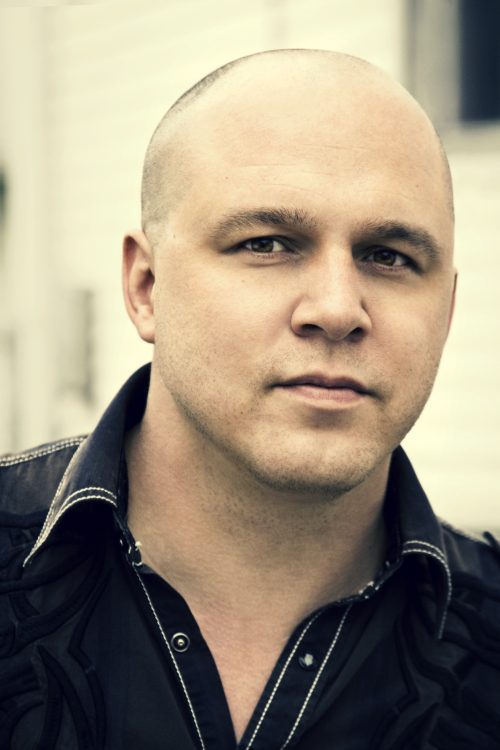

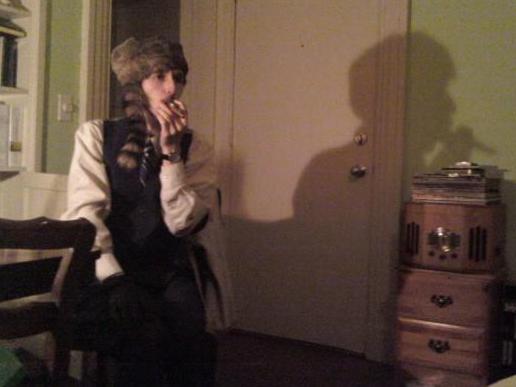
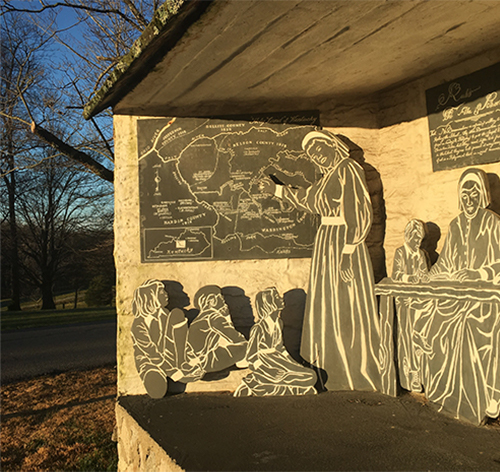



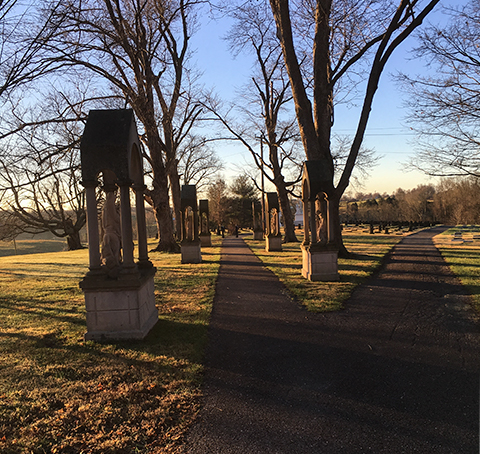

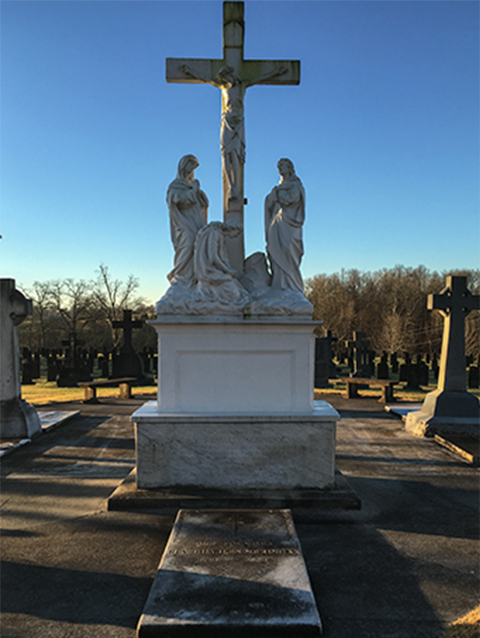

 Five Ravens
Five Ravens



 Brave New Whorl
Brave New Whorl Nautilus
Nautilus Spectre
Spectre Tipping Point
Tipping Point Transcendence
Transcendence Butterfly
Butterfly